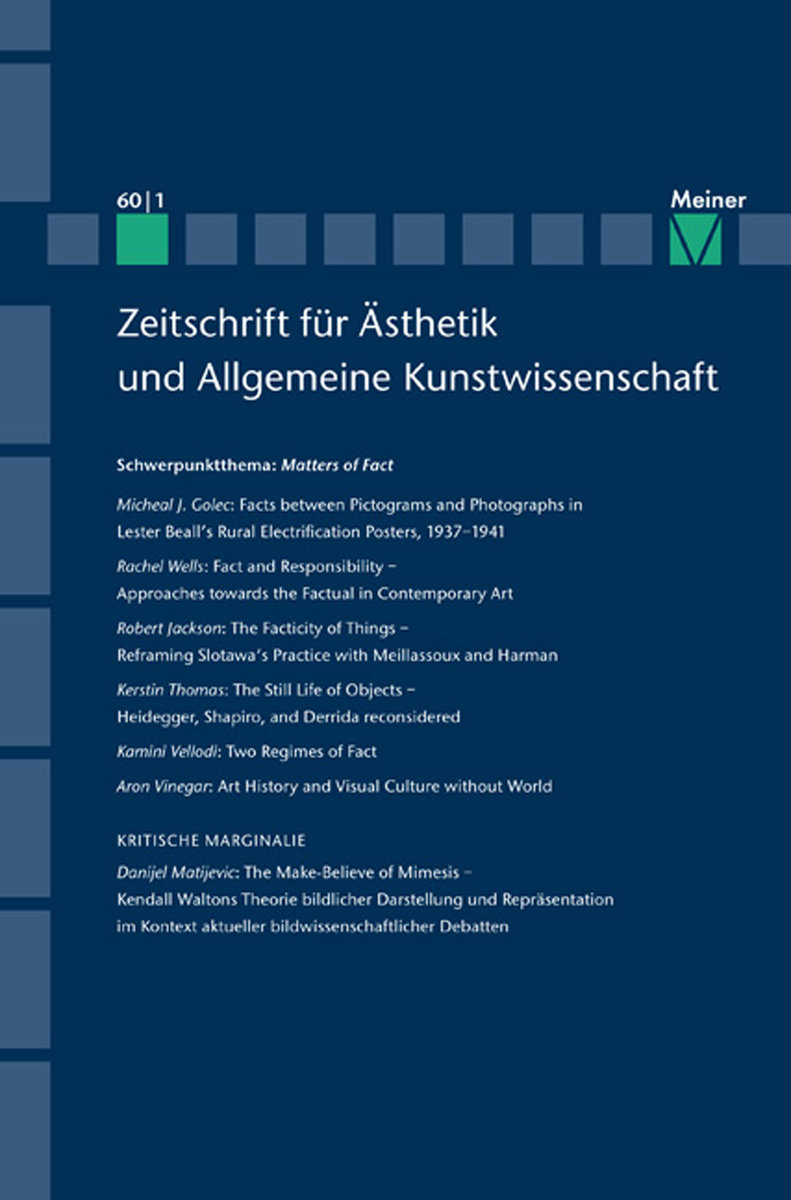AbstractsMicheal Golec: Facts between Pictograms and Photographs in Lester Beall's Rural Electrification Posters, 1937-1941In analysing Lester Beall's posters for the U.S. government between 1937-1941, Michael Golec demonstrates the twofold character of facts in art and design appearing even when they are applied to guarantee distinct messages. Commissioned by the governmental agencies to develop a series of posters to increase the electrification of rural farms, Beall introduces pictograms in his first series to represent electrification as "facts of the future." Its simple forms facilitate the travelling of this facts without loss of their integrity. The same holds true for the use of photographic images for the second campaign of 1939. Following the revaluation of photography as a means for the documentation of social reality, as represented by the FSA photographers under the guidance of Roy Stryker, the medium served here as the authentication of facts. Golec holds, that Beall by reducing the complexity of the photographic images, to create a pictorial integrity of his posters, even despite of the use of a seemingly documentary medium, reinforces the ambivalent factual character of the pictures. So, paradoxically by heightening the communicative character of the design and hence stressing the idea of facts as integral realities outside of artworks, Beall's posters reveal the ambiguous character of pictorial facts creating their own specific qualities. Golec concludes, that facts in works of art and design have a twofold character resulting from their belonging to different spaces, which although meant to accomplish and address different facts, inevitably travel, overlap and bleed into each other. Thus oddly these facts refer or represent reality and simultaneously are a thing made (factum) that present and hold their own pictorial reality.


